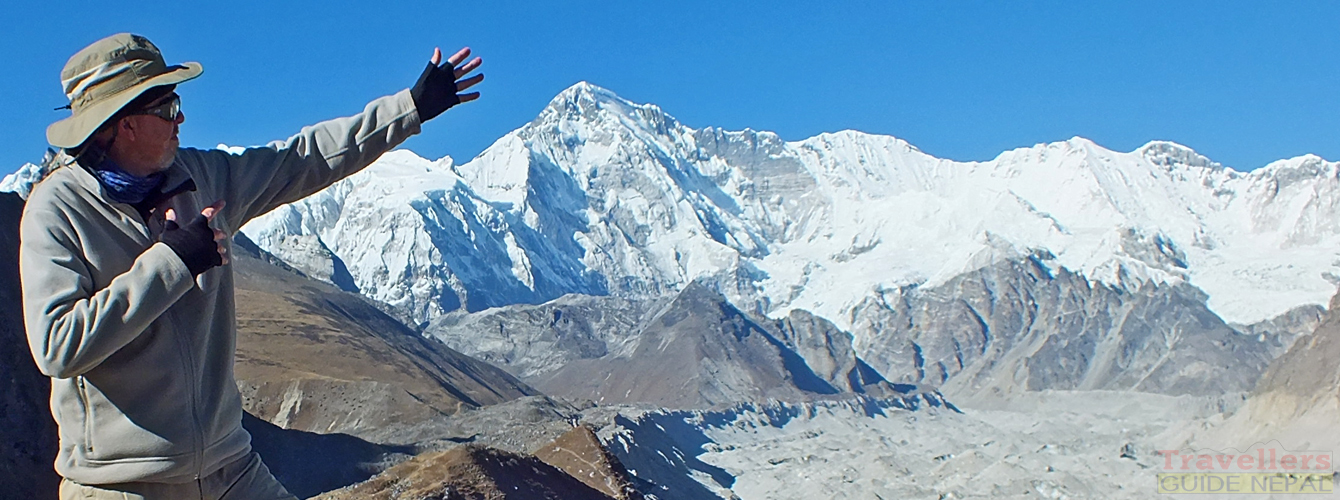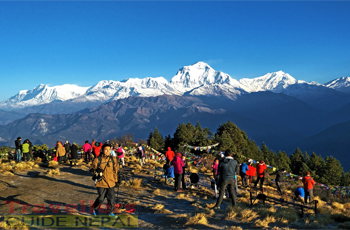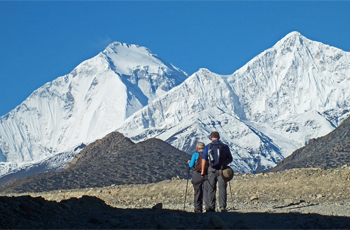
Trekking in Nepal is the most popular outdoor activity in Nepal, and it is for those who are want to explore nature, culture, and more wilderness adventures. Trekking is the first and the major adventure activity of tourists in Nepal. Thousands of foreign and domestic tourists go trekking in the Himalayas every year. The diversity of the trekking routes in Nepal cannot be seen in any other country in the world. From one or two-day treks to more than 150 days long and challenging Great Himalayan Trails Trek can be your choice. The Great Himalayan Trail covers huge parts of the Himalayas from Kanchenjunga in the east to Humla and Darchula in the west.
Depending on your time and interest, we can organize a short two-day to a month Trek to different parts of the country. Trekking is the best option if you want to get to know about Nepal and the Nepalese way of life. Popular trekking destinations are the Everest region, Annapurna region, Langtang region, Manaslu region, Mustang region, Dolpo region, Makalu Base Camp, Kanchenjunga region, Rolwaling region, Helambu/Jugal Himal region, Mugu (Rara Lake), and Limi Valley. On these trips, you will get a rare opportunity to experience Nepal’s rich cultural diversity, friendly people, warm hospitality, honesty, and smile of Nepali people. That will surely touch your heart, and of course, you will see astonishing landscapes and Jaw-dropping views of the Himalayas.
Difficulties can be depending on the duration, length, and height of the trek. There are some problems with transportation facilities during the main trekking season. Most trekking involves domestic flights to reach the starting point of trekking. Road access to the remote areas is limited or bumpy dirt roads. Because of unpredictable mountain weather conditions, the flights often got canceled. Therefore, to avoid the hassle and stress, we need to book air tickets in advance and one or two extra days after the day. Because of the additional days, you will be worry-free during the trip.
Physical Fitness
Many foreigners are hesitant to trek in Nepal. Due to geographical remoteness, inconvenient motor roads, thinking of steep mountain terrain, and worrying about physical fitness, many people lose their interest. But for trekking in Nepal, you don’t have to be a mountaineer or athletic. If you are reasonably healthy, physically/mentally fit, have positive thoughts, self-confidence, and determination that definitely will support your dream to reach the Himalayas of Nepal. If you are planning to trek for more than a week and want to go to a high mountain valley and pass, definitely physical exercise is recommended. Jogging or climbing stairs every day for few months before coming to Nepal and a long walk one or two days a week will definitely be rewarded.
Trekking Season in Nepal
Nepal is suitable for Trek all around the year. But autumn and spring are the best seasons for trekking in Nepal, and spring, summer, and autumn are the perfect seasons for trekking places like Dolpo or Mustang.
Spring: March-May
The spring season is considered to be the second-best Trekking season in Nepal. As the temperature warms up and plenty of colorful flowers bloom including Rhododendron. Usually, in the morning, the sky is clear, clouds begin to appear later in the afternoon, and sometimes light rain with lightning. Therefore, it is best to trek in the morning and provide magnificent scenery of the Himalayas. The early days of the spring season tend to be a bit cold, and May is the hottest month of the Year. But it also depends, how high you are going to trek. If you are going to trek above 4000-4500 hundred, the temperature falls below zero at night. Therefore, good gear is recommended to carry all-around year trekking in the Nepal Himalayas.
Summer (Monsoon): June-August
The summer season (June to September) brings lots of rainfall to Nepal. And that restricts the many trek trails due to rising water levels in the rivers, landslides, and less visibility. During the monsoon season, the mountainous areas are often getting cloudy, raining and the trekking trails are muddy and appear Leaches. But, it also brings amazing greenery, freshness, and plenty of wildflowers. If you have a bit of courage and have an interest, nature definitely offers a different experience and opportunity.
Autumn: September-November)
Generally, the autumn season is settled, and clear weather and pure blue sky. Autumn is right after the monsoon. The dust and pollution clear from the atmosphere and provides a spectacular view with warm and comfortable temperature. The autumn season is the best season for trekking in Nepal. December’s weather is colder and mainly higher in the mountain. Always need warm and good condition gears.
Winter: December-February
Many people do not like to trek in the high mountainous areas during the winter months. From December to the end of February, the temperature falls below -20 degrees centigrade. Many tourists hesitate to trek during these months due to heavy snowfall, extreme weather conditions, and high mountain passes are closed. But, if you have a bit of courage and can handle the cold weather then trekking in the winter season can be very enjoyable. Comparatively very few trekkers on the road than in the main trekking season. Relatively weather is also a clear and awe-inspiring view of the majestic Himalaya. Personally, my third-best season for Trekking in Nepal.
For Further Information
Ambar Tamang
Blossom Expeditions
Tel: 977-1-4810388
guidenepal2021@gmail.com
blossomexpeditions@gmail.com
Mobile: 9851123762 (Ambar Tamang)
WhatsApp & Viber No: 9841454462

Among all the trekking destinations in Nepal, some of the trekking destinations are restricted. Foreigners must obtain a special permit to trek in those areas. The permits can be obtained through authorized trekking companies as well as trekking staff are mandatory. Restricted areas of Nepal & Permit Fees 1. Upper Mustang a. Lomanthang Rural Municipa...

Entry/ Exit Points The entry and exit points for the purpose of the foreigners entering into and departing from Nepal are following. The Immigration offices in such points are open 24 hours. Entering and departing from other places except the point is treated as a violation of the Immigration Act and the Regular Immigration Office, Tribhuvan International Airpo...
Comments